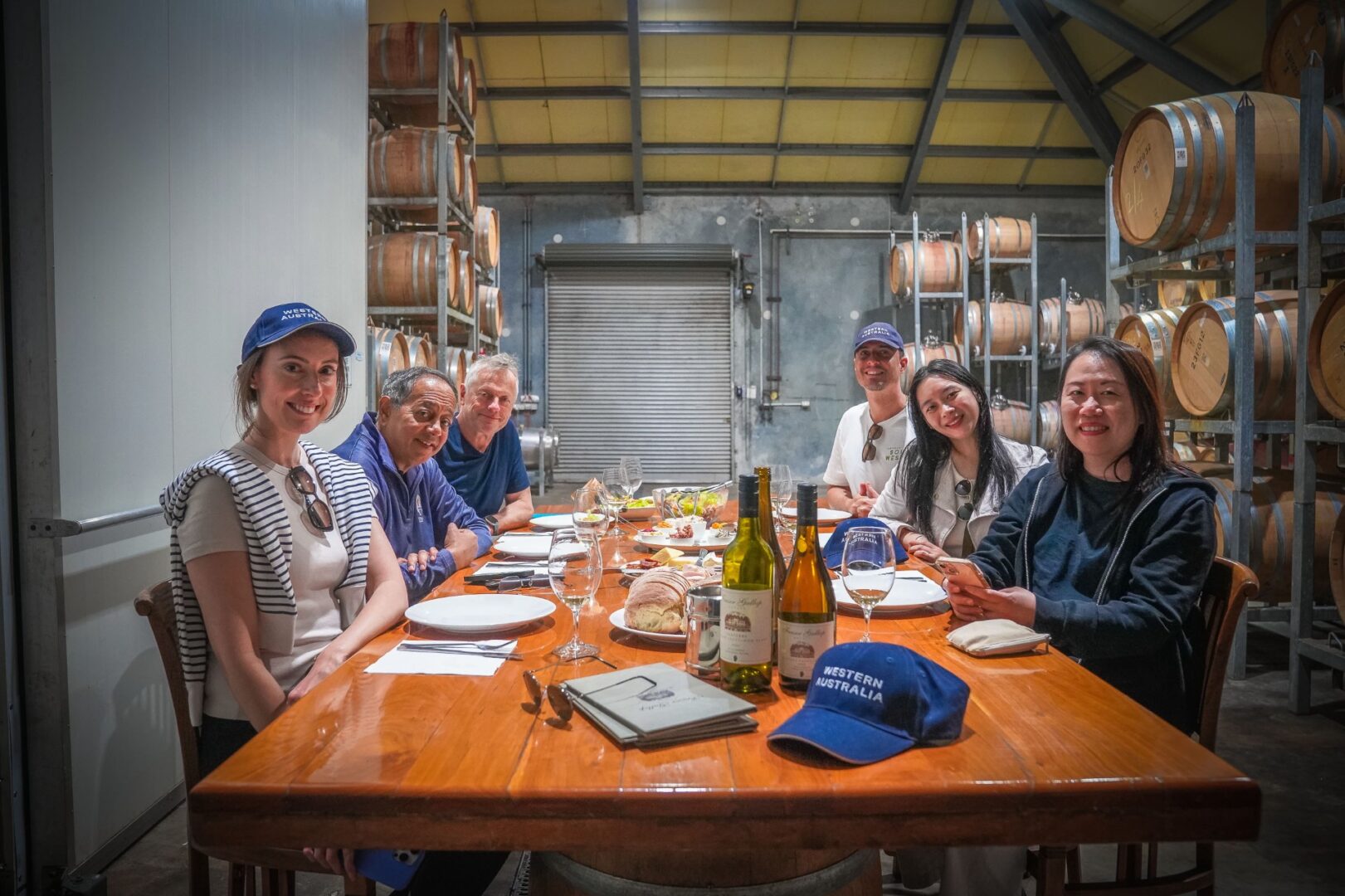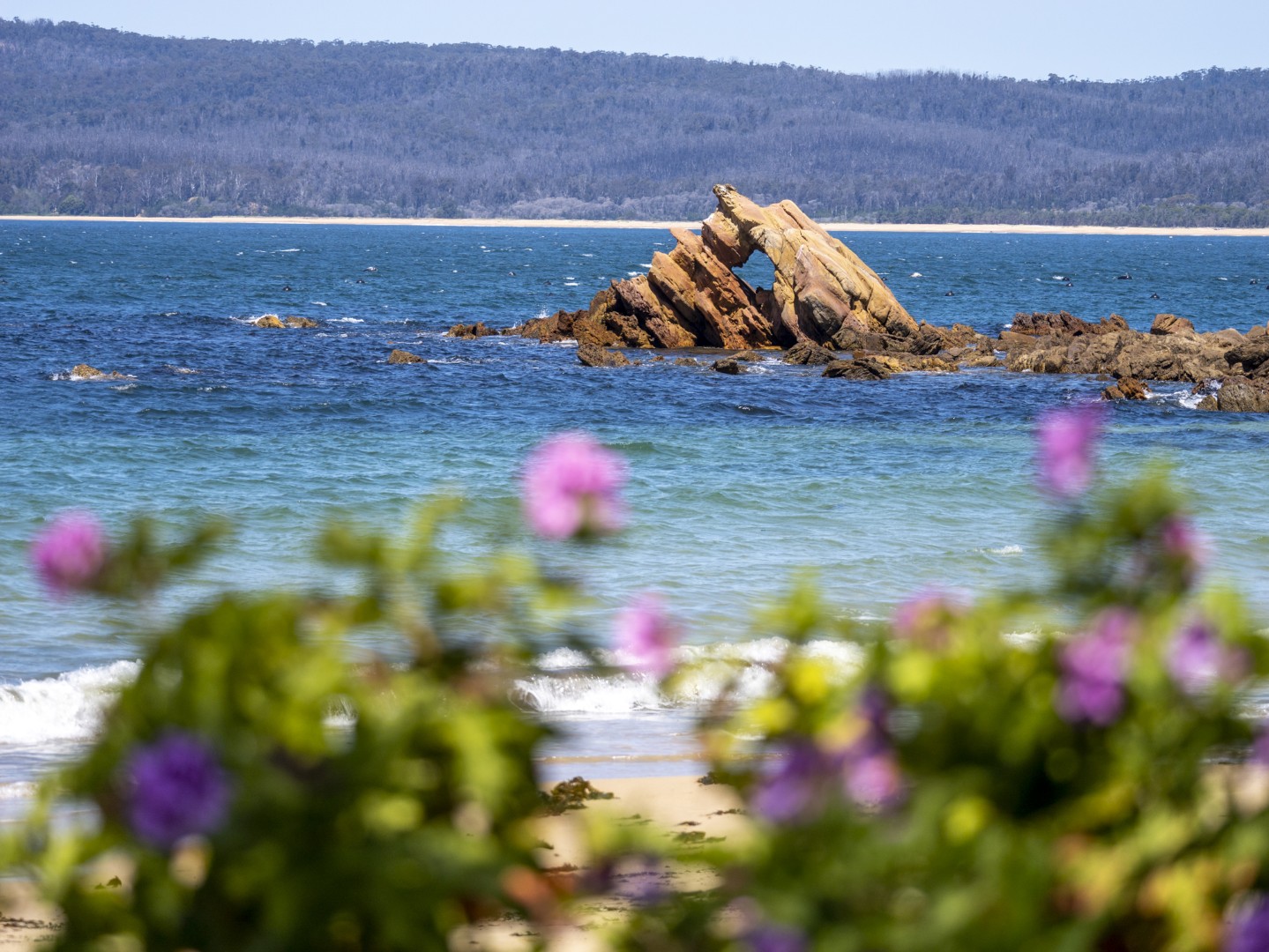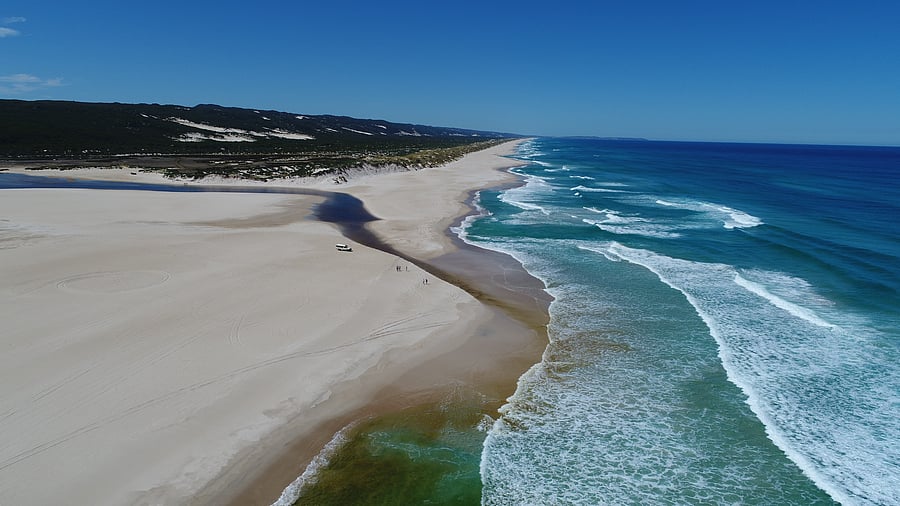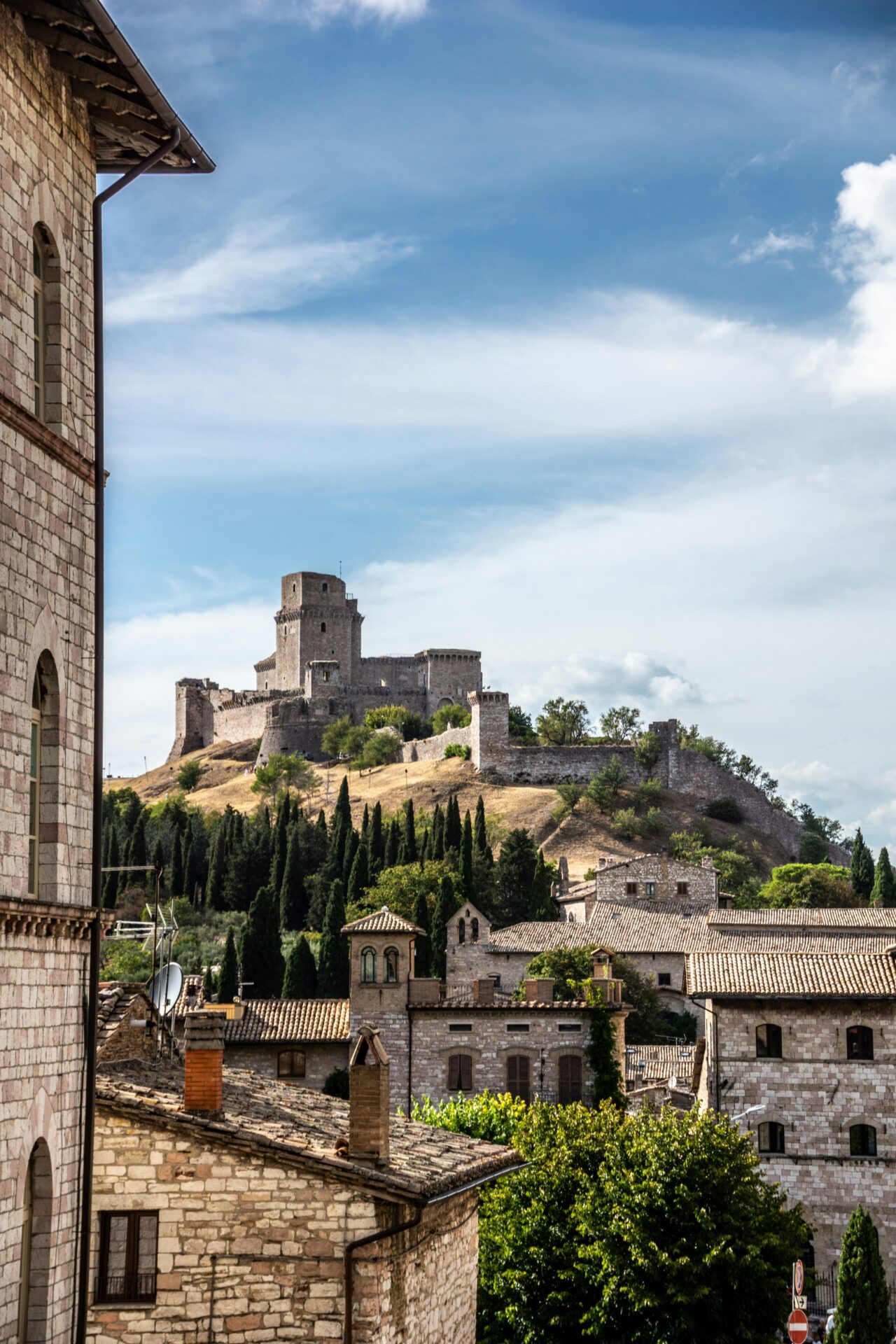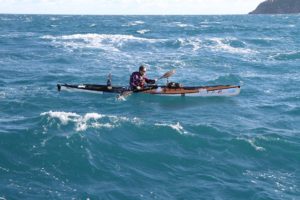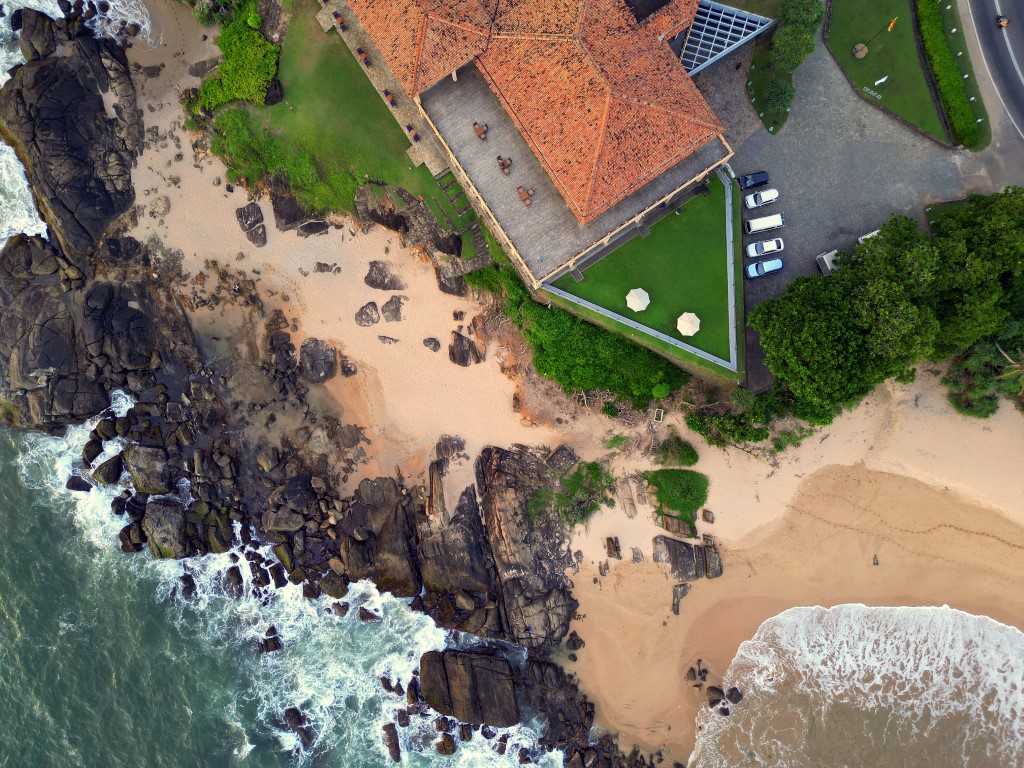
Return to the Lighthouse: A shining beacon of tropical modernism
All images courtesy of Sundeep Kumar.
When I first visited Sri Lanka at the invitation of Jetwing Hotels in February 2020, just before the pandemic hit and turned the world upside down, my wife and I stayed at the iconic Lighthouse Hotel in Galle. It is one of those places that sticks in one’s memory, so when my photographer colleague and fellow traveller Sundeep and I were invited back to the emerald isle in November 2022, my first instinct was to spend a few extra days and revisit the Lighthouse at the end of the official media familiarization (FAM) tour. My friend Hashan, the scion of the Cooray family that owns the Lighthouse, was kind enough to oblige and so here we were, pulling into the massive porte cochere to the building.
Stairway to Heaven
Once through the entrance, we were immediately blown away by the sight of a magical spiral stairway to heaven. A life-size sculpture of battling soldiers made of copper and brass, beaten and welded together, forms the balustrade all the way to the top This iconic installation, designed and executed by the famous Sri Lankan sculptor Laki Senanayake, has its origin in a drawing that he had done in 1961 titled “The Portuguese arriving in Ceylon under a cloud”. It could not be more perfect for the Lighthouse since history tells us that Portuguese General Lorenzo de Almeda and his army were blown into the harbour of Galle by a fierce storm in 1505 while sailing around India. The sculpture depicts the Portuguese invaders being repulsed by the Sinhala king and his army. At the foot of the staircase, Lorenzo de Almeda is surveying the scene through his telescope, while his soldiers disembark from his galleon and proceed upwards, accompanied by horses and cannon, while battling with the native warriors armed with spears and bows. At the top of the staircase, the Sinhala king sits on his throne, playing a flute, much in the manner of the emperor Nero fiddling while Rome burned.
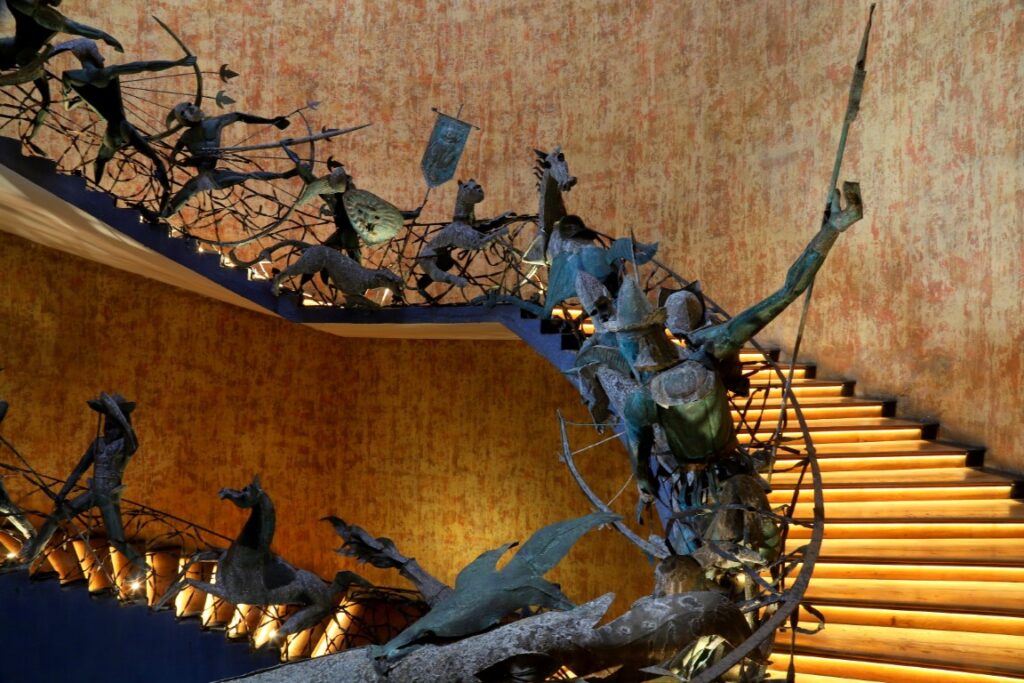
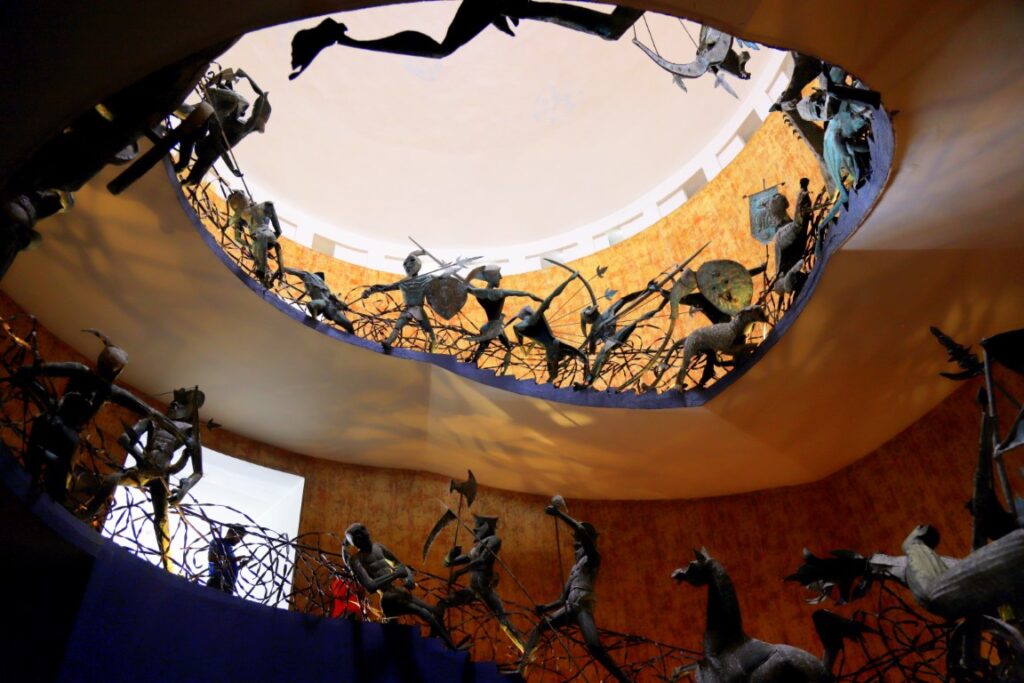
Geoffrey Bawa and tropical modernism
Ascending the staircase slowly while admiring the giant sculpture, one eventually reaches the top and emerges into a large open reception area, with the restaurant to the left and a stunning panoramic view of the Indian Ocean. This whole style is highly reminiscent of the old rest houses and planter’s clubs of the colonial era and is the hallmark of Laki’s great friend and mentor Geoffrey Bawa (1919–2003), Sri Lanka’s most celebrated architect. The eccentric though highly creative Bawa pioneered this unique architectural style of tropical modernism, which seamlessly connects the outdoors and the indoors. This clean-line and minimalist aesthetic highlights wide open spaces, allows plenty of natural ventilation and sunlight, and draws strongly on indigenous craftsmanship and local materials. The Lighthouse, built in 1995, was the first hotel collaboration between Bawa and the Coorays. It epitomizes tropical modernism, with its low-slung lounges, terraces, and verandahs, and its two residential blocks and single service unit. These flow into each other and appear moulded into the rocky promontory on which they are built. The antique period furniture scattered throughout the reception completes the throwback to the colonial era.
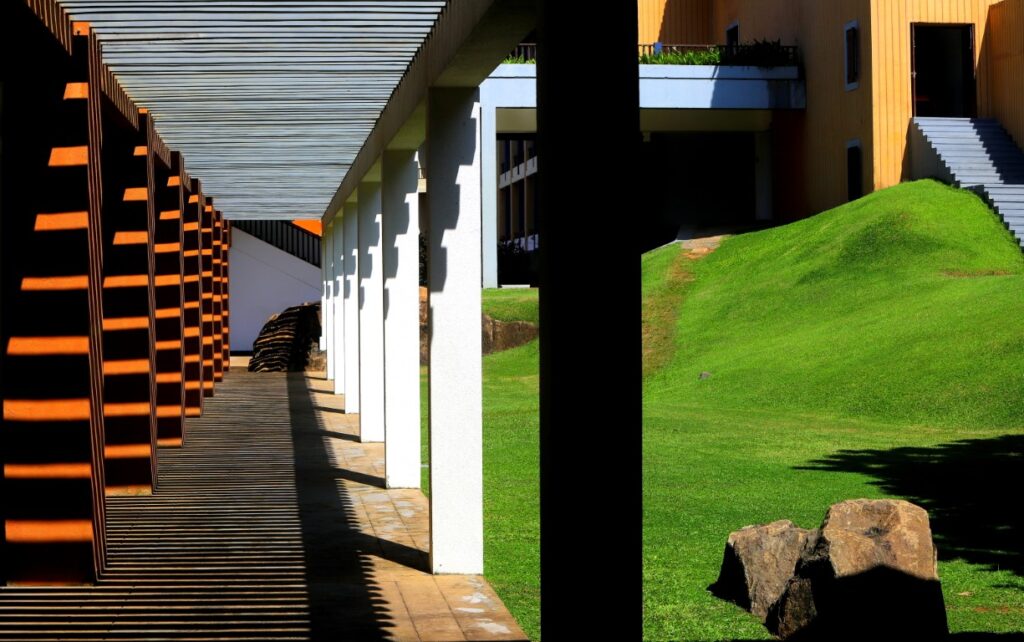
In the footsteps of Fa Hsien
We were ushered into the Fa Hsien suite on the first floor of the main residential block, named for the Chinese Buddhist monk (flourished 399–414 AD) who went on a pilgrimage from central China to India and then to Sri Lanka. In today’s fraught times with vexed relations between the two Asian powers, it is easy to forget that once harmony and mutual respect prevailed between the two countries. After spending a decade in the Indian subcontinent, Fa Hsien returned home with a great many copies of Buddhist texts and translated them from Sanskrit into Chinese. He also transcribed his writings on his journey along the Silk Road with ink on bamboo and silk for the benefit of future travellers as “A Record of Buddhist Countries”, better known today as “The Travels of Fa Hsien”.
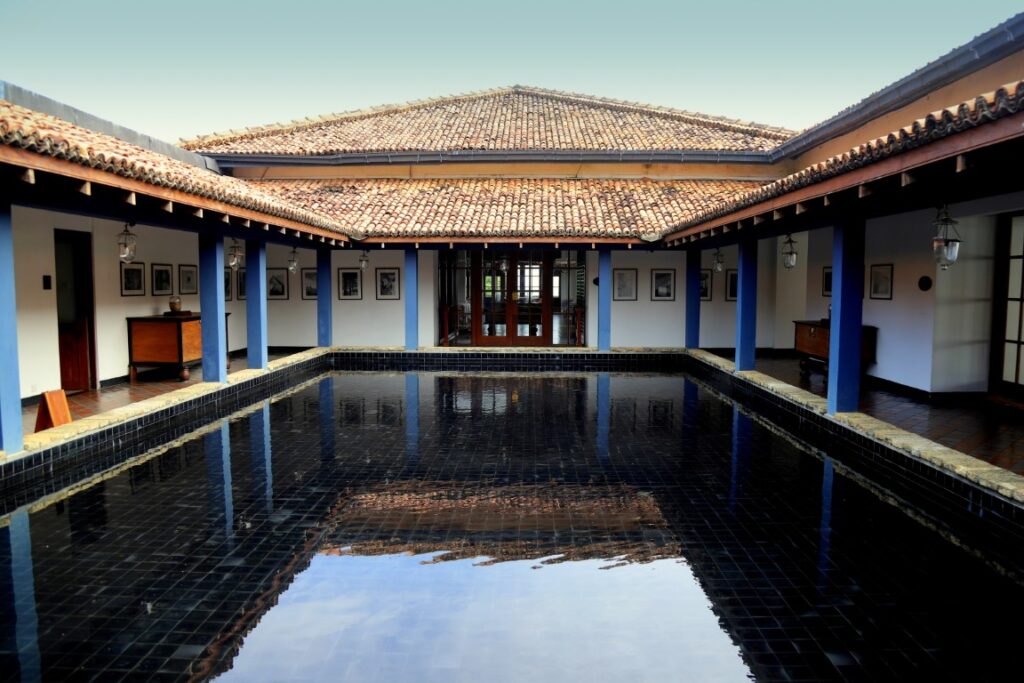
The suite, with gorgeous teakwood floors, is beautifully decorated and furnished, the highlight being a large four-poster bed with carved Chinese calligraphy. The outdoor balcony, running the width of the room, offers the most magnificent views of the sea.
Later that evening, I reclined in the deck chair watching the surging waves rush through a gap in the rocks. In seconds, they spread themselves like the blossoming petals of a white frangipani flower, before gradually disappearing into the sand. Overhead was a delicate palette of blue and orange clouds, all being funnelled towards the glowing orb on the horizon as it sank behind a bank of black nimbus clouds. The orchestra of light lingered on in a final radiant display before the curtain came down.
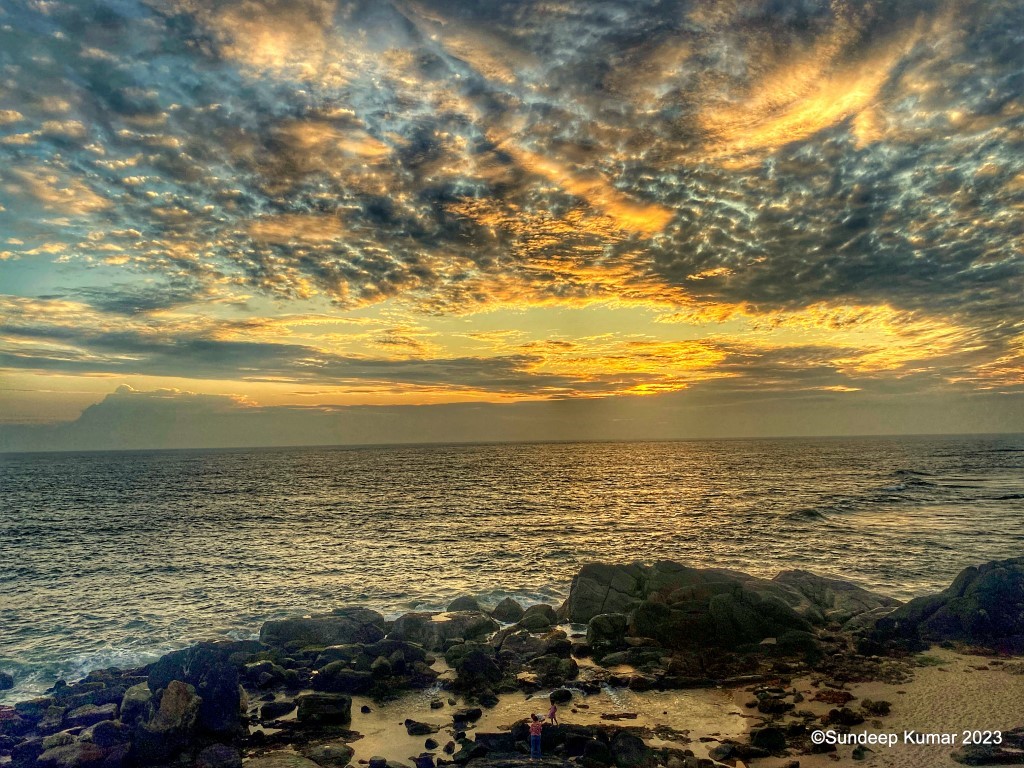
Indulge yourself at the Lighthouse
In the morning, you can enjoy a dip in two large swimming pools or, if you are the more adventurous sort like me, you can slip away through the rocks to the small beach to the south. It won’t win any awards as Sri Lanka’s best beach, though it is very pleasant, and as the big waves played roughhouse with me, I revelled in the privacy as I was the only person there.
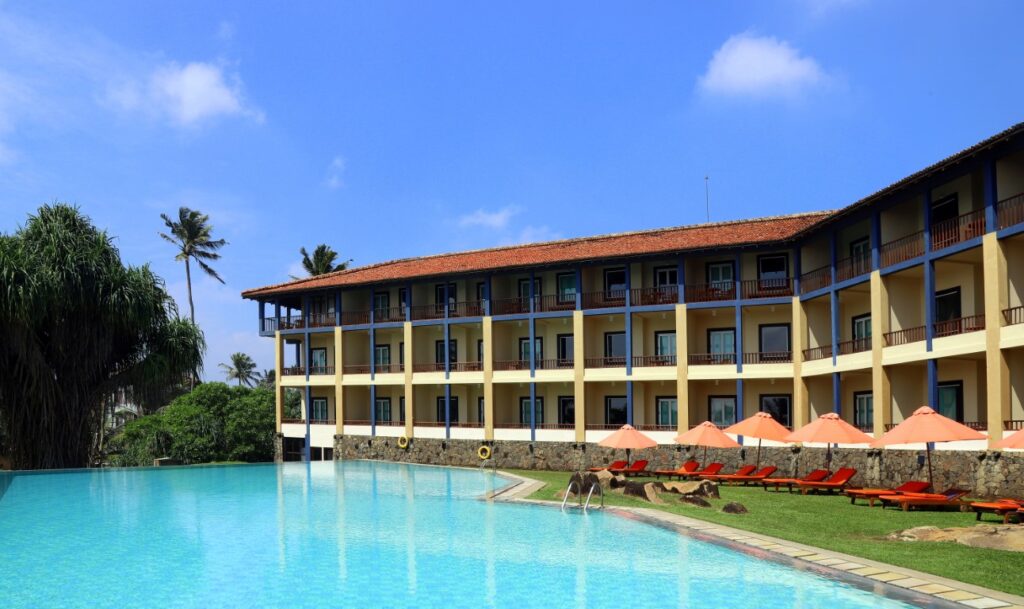
Famished after my swim, I made my way to the breakfast terrace overlooking the rocky promontory and the crashing waves, where I enjoyed a sumptuous spread of croissants, juices, fruits, cheeses, and fried eggs, accompanied by tomatoes and mushrooms, all washed down with delicious coffee.
The delicious seafood is a high point at the Lighthouse, and at night I selected the dill-marinated bay prawns and the cumin-roasted pumpkin soup followed by the pan-cooked fillet of mahi mahi in lemon cream sauce which just melts in the mouth.
A visit to Galle Fort and the Old Town
The Lighthouse is well positioned for exploring the town of Galle, with its iconic Dutch fort looking out over the ocean. If you are feeling energetic, you can cover the 3 km walk in about 30 minutes. Otherwise, just hop into a tuk-tuk. Remember to use your negotiating skills, but don’t overdo it; Indians are generally well liked in Sri Lanka, but a humble attitude and a ready smile will go a long way to soothe the sensitivities of our smaller neighbour.
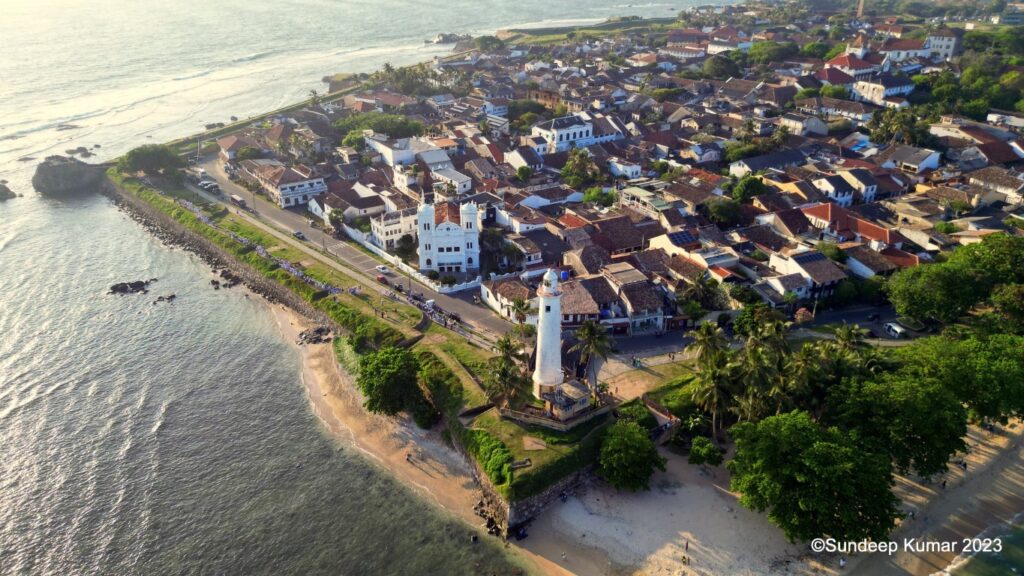
Just a short walk from the hotel and well worth a visit is the Mahamodara Sea Turtle Hatchery. This is a volunteer conservation effort focused on collecting turtle eggs, incubating them, and releasing the hatchlings into the ocean in a safe manner, increasing their survival rate. Entrance is free and the volunteers will show you around, but a small donation for supporting this excellent cause will be gratefully accepted.
Galle has served three masters, starting with the Portuguese who founded it in the late sixteenth century, then the Dutch who fortified it, and finally the British who took over at the end of the eighteenth century.
The dominant landmark is the old Dutch fort which encompasses the Old Town. The best time to visit is at sunset. You can walk along the ramparts from the clock tower at one end to the lighthouse at the other end and stop to examine several of its 14 bastions, illuminated by the glow of the setting sun. If you are a cricket fan, you could go during the day and watch a game at the scenic Galle cricket ground, built in the shadow of the clock tower, and with the Indian Ocean visible on two sides. Like the old Dutch bastions, this cricket arena was once a home favourite where the Sri Lankan side would regularly repulse foreign invaders from Australia and England.
If you are keen on history, pay a visit to the National Maritime Museum which has interesting exhibits of ancient marine artefacts removed from shipwrecks off the southern coast of Sri Lanka.
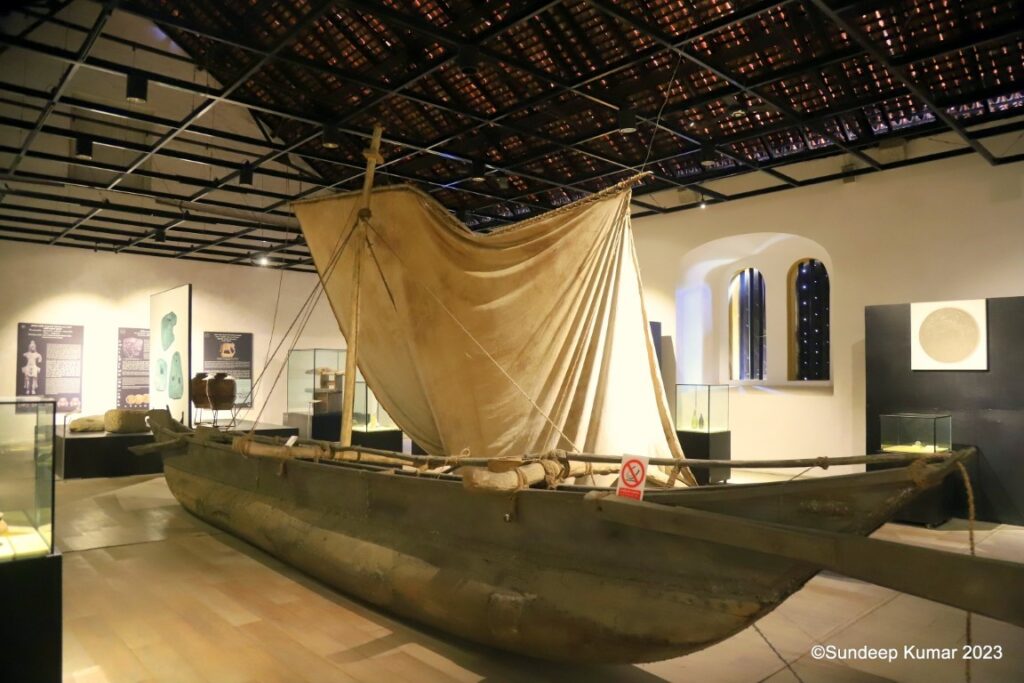
End your day by exploring the trendy arts and crafts shops in the Old Town and enjoy a sundowner followed by a seafood dinner at the Pedlar’s Inn Café.
Two other exciting water-based adventures we experienced as part of the Sri Lanka FAM were whale-watching off Mirissa (40 km/50 minutes south) and a lagoon tour of the Bentota backwaters (50 km/75 minutes north). Both are within driving distance of Galle, so you could base yourself at the Lighthouse and make a day trip out of each one. I had done the whale-watching trip on my previous visit, but the giant blue whale, diva of the southern ocean, had remained elusive, so I was hoping for better luck this time.
Looking for Captain Nemo off the Mirissa coast
The gods were smiling on us this time. Minutes after leaving Mirissa harbour, our private catamaran (contact SailLanka) found itself with a miniature naval escort in the form of a pod of young dolphins who playfully kept diving and surfacing around the twin prows as they raced through the translucent water. Their sleek oblong bodies moved in perfect rhythm with the boat, never once colliding with it or with each other as they criss-crossed at great speed, like an ace team of top-performing acrobats, barely inches ahead. We watched in awe, mesmerised by this water ballet by such exquisitely beautiful and graceful creatures! But more excitement was to follow. With a great whooshing roar, a giant blue whale surfaced barely 20 metres off our port bow. Water poured off its massive silvery back until it slid below the waves mere seconds later, reminding me so much of the mythical Nautilus commanded by Captain Nemo. We were blessed with several more sightings of this majestic and graceful creature, as the giant denizen of the deep accompanied our boat for the next hour, appearing and disappearing at will.
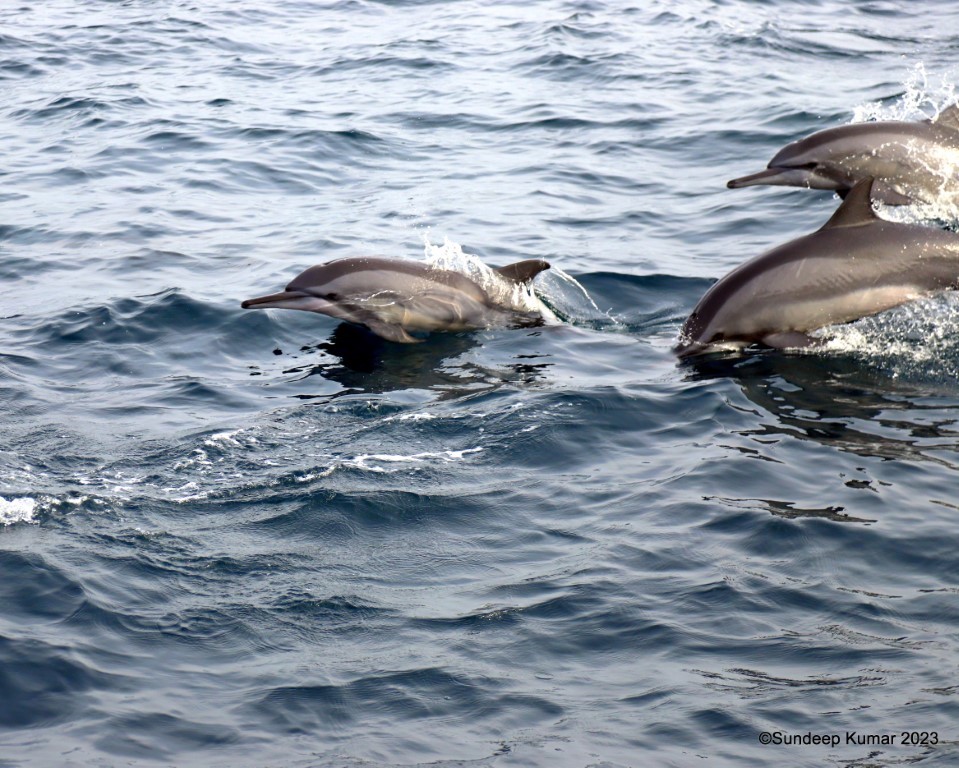
Discovering another reality in Bentota
Bentota is well known to foreign visitors as Sri Lanka’s most popular beach resort and everybody comes to enjoy the sun, the sea, and the sand which are indeed sublime. But venture a bit further inland to see the green behind the gold and you will discover a different reality. We took a boat safari on the Bentota lagoon and travelled through the mangrove swamps and passed myriad small islands, cruising slowly down the shallow, broad river as it wound its way to the sea.
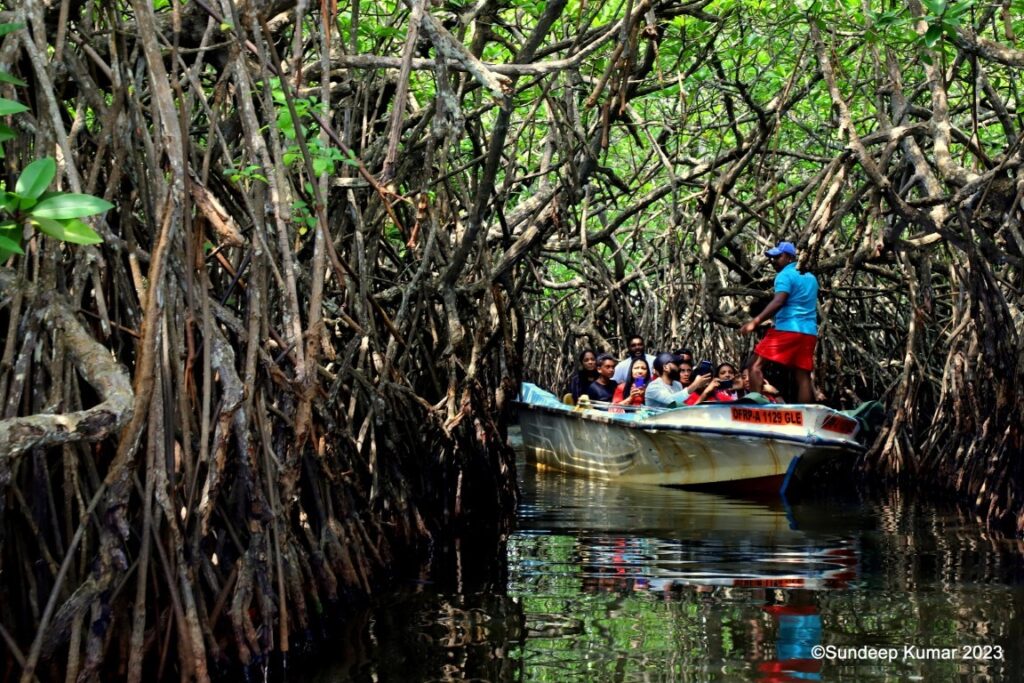
I have described the lagoon experience in pieces on Goa and the Andamans, so here I will focus on the highlights of the Sri Lankan tour.
The first was a visit to Cinnamon Island where we were shown how cinnamon bark is peeled from a tree and then cured and dried. The second was a very ticklish though fun experience of natural foot therapy on another island. You immerse your feet in a small tank full of koi fish which are only too happy to nibble at them and remove the dead skin and cuticles.
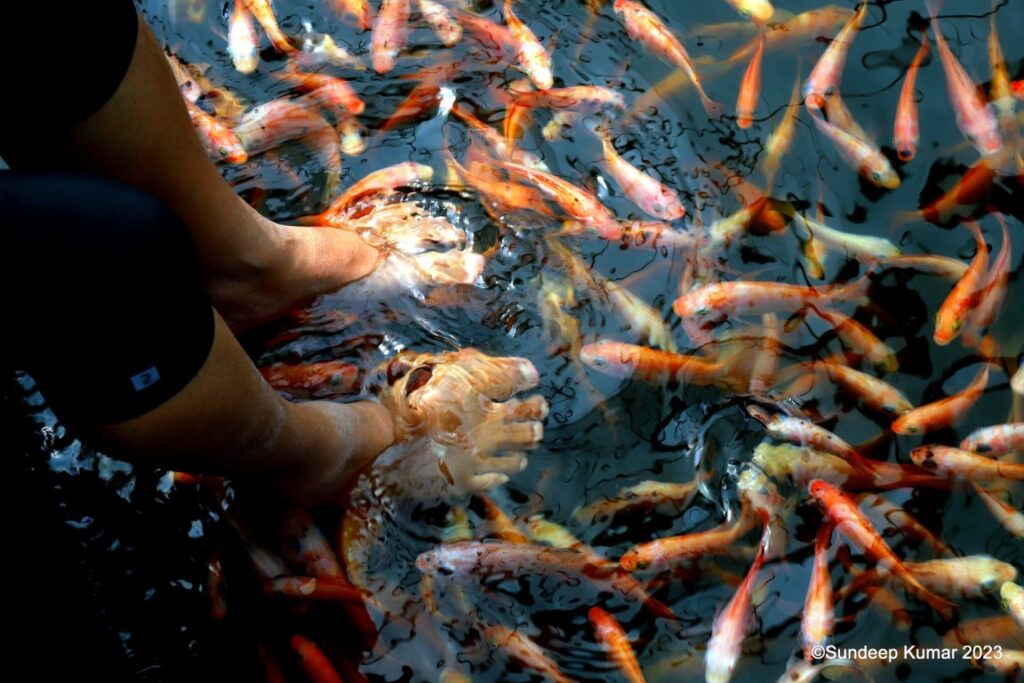
And to bring this Sri Lankan journey full circle, if you are interested in learning more about Geoffrey Bawa (contact Geoffrey Bawa Trust), do visit his beautiful country estate, just a few minutes from Bentota. Lunuganga (it translates as Salt River), his home, is located on the banks of the Duduwa Reservoir, and has exquisitely manicured gardens and scattered European statuary. Not far away in Beruwala is Brief, which was the home of Geoffrey Bawa’s older brother, Bevis Bawa, a renowned landscape architect. This is also worth visiting for its gardens, which drop away from the main house in random steps and give the impression of a tamed wilderness, with their jungle pathways, lush foliage, and exotic plants. Pause for a minute to stare at the jet black lilies from Malaysia, so exquisite and yet so sinister in being so out of the box, much like the gay Bawa brothers themselves!


You can book your stay at the Lighthouse here: https://www.jetwinghotels.com/jetwinglighthouse/
![]()

